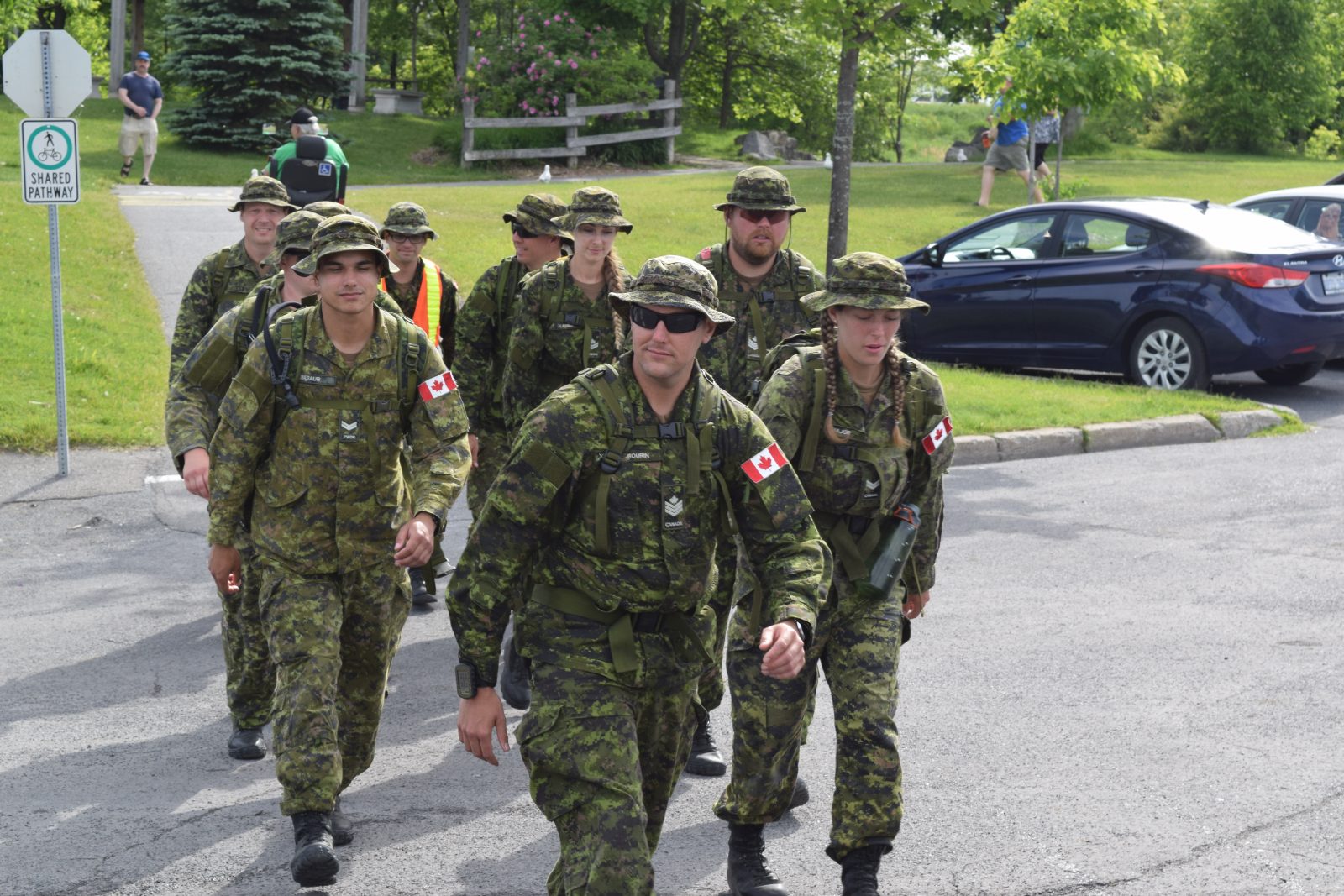CORNWALL, Ontario – The Nijmegen March is held annually in the Netherlands. It starts every year on the third Tuesday of July and is the largest multiple day marching event in the world. The 50 000 participants each year are mostly civilians, but militaries from around the world also enter teams into the march. The Canadian Armed Forces have been participating in the Nijmegen March since 1952. This year, they are sending 14 teams comprised of over 200 personnel. Each team consists of 11 personnel, including 1 medic and 1 person who has previously participated in the march. The SD&G Highlanders have been selected as one of those teams, to celebrate the unit’s 150th anniversary.
The SD&G Highlanders have already begun training for the Nijmegen March. The Canadian Armed Forces requires interested members to complete at least 500km of training marches, although typically the average soldier will complete over 700km of training prior to departing. The march itself will be 40km a day for 4 days for a total of 160km. Over the next several months the SD&G Highlanders will be training up to 4 times a week, working from 5km to 40km marches. The unit will be more and more visible in the community as we prepare for Nijmegen.
The 4-day march in the Netherlands has been taking place since 1909, having started as a Dutch military training exercise. It has been permanently stationed in Nijmegen since 1916 and has taken place every year except during the two World Wars. Nijmegen is the oldest city in the Netherlands, and is characterized by a combination of Roman ruins, 14th century architecture and post-war additions which serve as a reminder of the destruction the city endured during WWII. Each day of the march starts in Nijmegen and is named after the biggest town that it goes through. Tuesday is the day of Elst, Wednesday the day of Wijchen, Thursday the day of Groesbeek and Friday the day of Cuijk. Successful participants receive a Dutch decoration (the Cross for the Four Day Marches) and gladioli, a sword shaped plant that is associated with ancient gladiators.
As the SD&G Highlanders well know, Canada and the Netherlands have a very special friendship. Over a 9-month period during 1944 and 1945, a Canadian-led coalition made up of mostly Canadians, but also Polish, Belgian, American, British and Dutch resistance fighters liberated The Netherlands from the Germans. Dutch citizens, who were facing starvation, saw the Canadians not only as liberators but saviours. 7 600 Canadians died liberating The Netherlands, including 11 SD&G Highlanders who died liberating the town of Leesten. In 2005, the town of Leesten honoured their sacrifice by naming 11 streets after the fallen Glens. During the third day of the marches the SD&G Highlanders team will have the chance to go to a Canadian War cemetery in Groesbeek which houses 2 500 graves and pay tribute to our fallen soldiers. We are looking forward to renewing our friendship with the Dutch people during this year’s Nijmegen March.
As the Dutch say, “Death or gladioli”!



